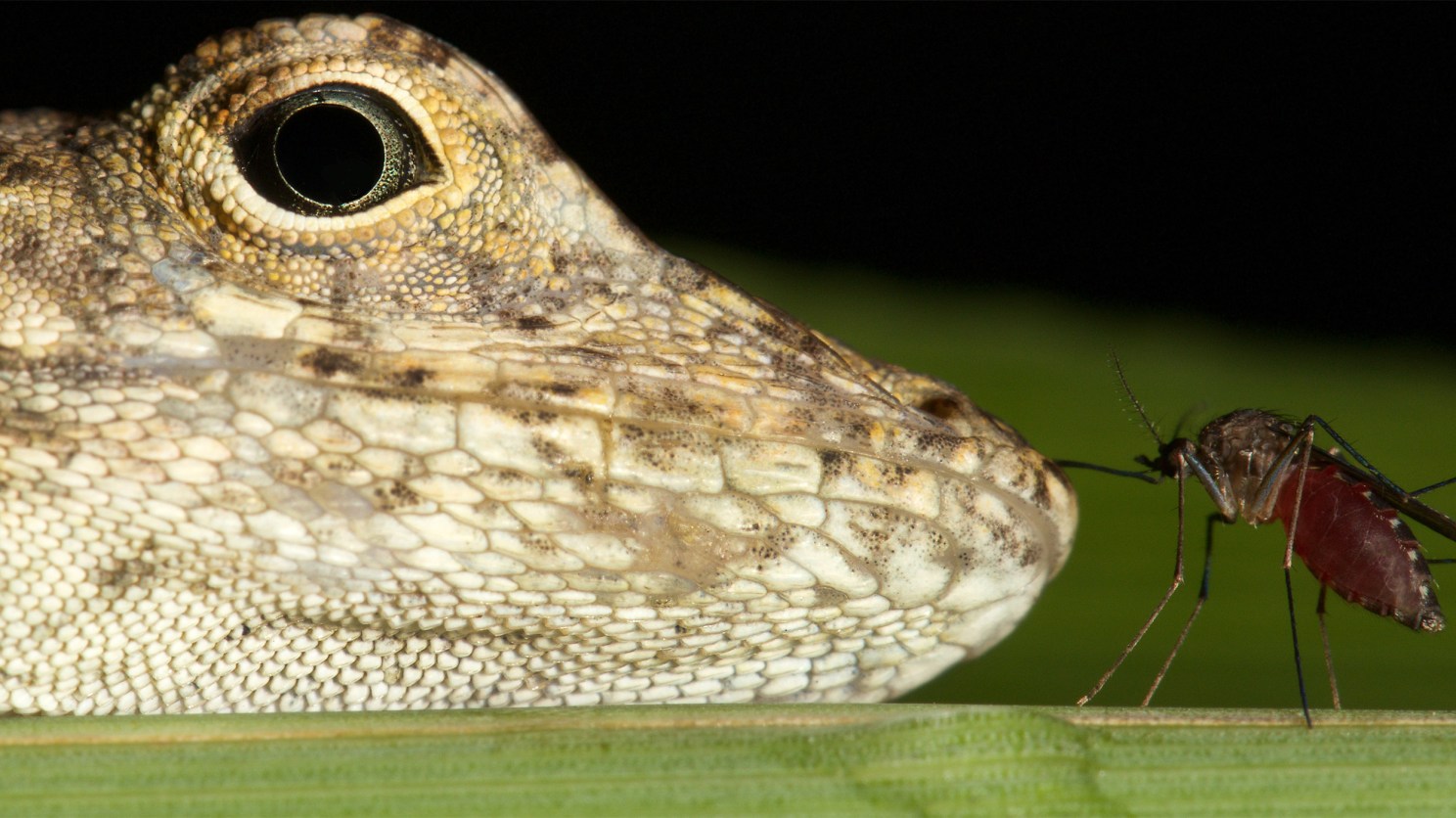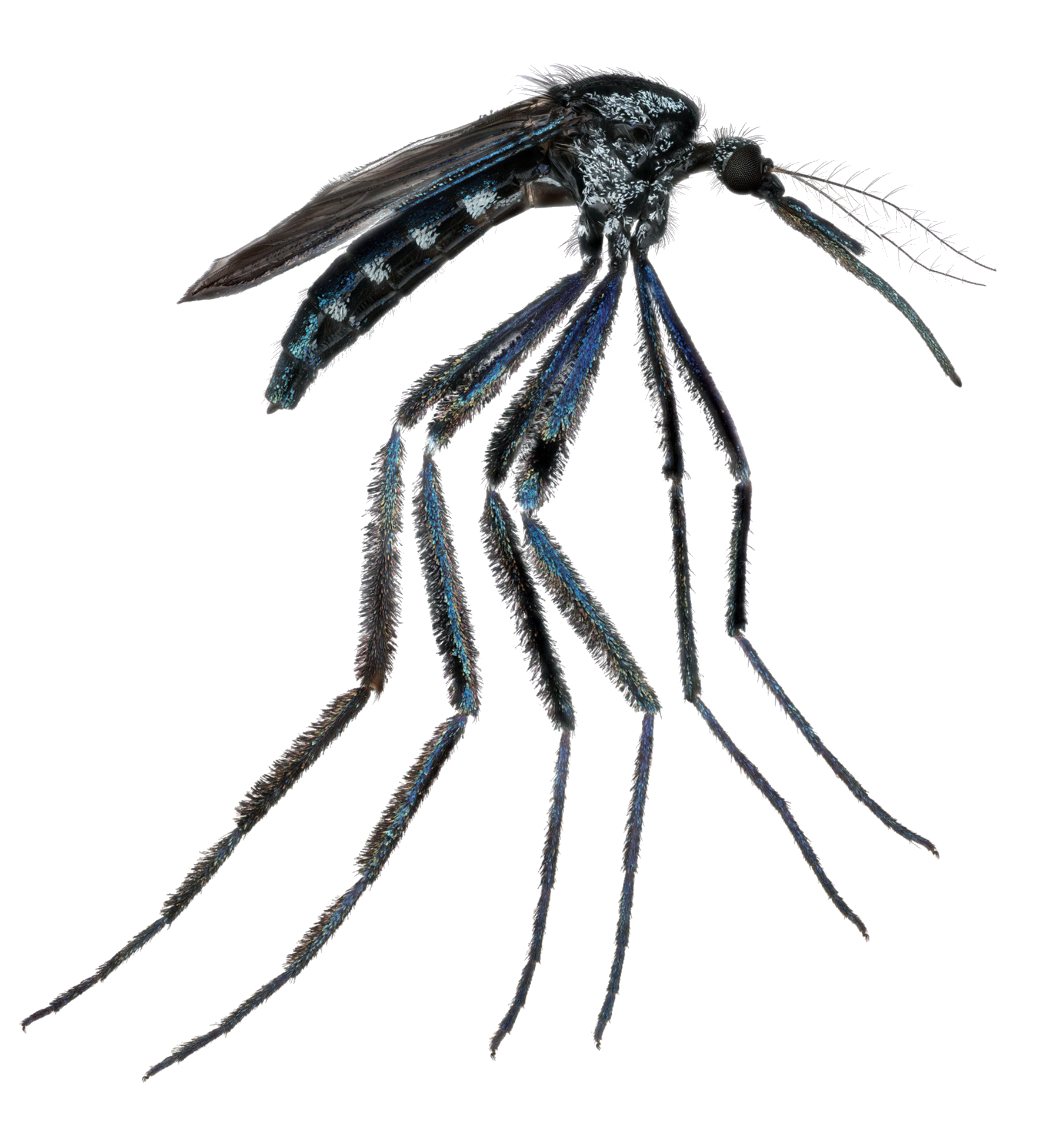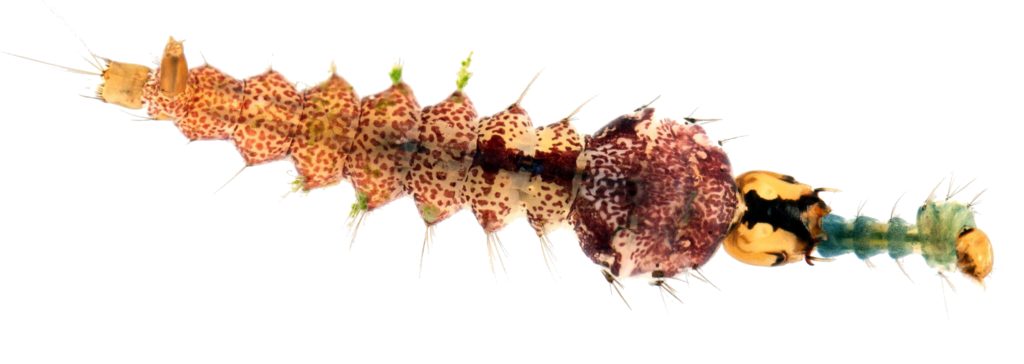Hate mosquitoes? Who doesn’t? But maybe we shouldn’t.

A Culex mosquito feeding from an invasive brown anole lizard in Florida.
Photos courtesy of Lawrence Reeves
Entomologist says there is much scientists don’t know about habitats, habits, impacts on their environments
A blood-sucking nuisance, mosquitoes are responsible for spreading diseases to hundreds of millions of people every year. True?
Yes, says entomologist Lawrence Reeves, but it’s also true that mosquitoes primarily feed on plant sugars, not blood. Only female mosquitoes consume blood, and only when they need it to complete their reproductive cycle. Also, it is possible some may serve as pollinators like bees, allowing plants to produce fruit, seeds, and more young plants.
The bottom line is that while mosquitoes have a bad rap, the truth is probably much more complex given how diverse they are and how much we don’t know about them.

“[Mosquitoes are] this rather indescript, dark insect that’s biting you and making you itch,” said Reeves, an assistant professor at the Florida Medical Entomology Lab at the University of Florida, who spoke last week as part of the OEB Seminar Series, hosted by the graduate students at the Department of Organismic and Evolutionary Biology. “In my lab, we’re trying to visualize mosquitoes, both their morphology and interactions with other organisms.”
Reeves makes the case that while mosquitoes may be one of the most immediately recognized insects, there’s plenty scientists don’t understand about their bodies, habitats, habits, and impacts on their surroundings. A lot of his lab’s work involves photographing and documenting many of the more than 3,700 species of mosquitoes that exist globally.
“We try to create these images that help us to visualize what mosquitoes look like. They are, of course, very small insects so we have a lot of trouble,” Reeves explained, while showing high-resolution, detailed images of the insects throughout the presentation. When someone asked his photography strategy, he said, “I’m often following them around with my hand trying to get them to land,” eliciting laughter from the audience.
One of the reasons photography and videography are so important is that they help Reeves communicate the diversity of mosquitoes, particularly in how they look and act.
Some estimates suggest that mosquitoes have been around for 217 million years; the U.S. and Canada have about 200 species, with Florida alone being home to about 90 species.
They tend to have long legs relative to their body, a protruding proboscis, and scales covering their entire bodies. But from there they start to diverge. They come in many different sizes. Some take on the natural color of their surroundings; others are more “flashy and charismatic.”
Aedes albopictus is the species we often think about as the common mosquito. It’s a non-native species “that loves to bite people” and transmits Zika and other diseases.
But not all mosquitoes are dangerous to humans. Take Toxorhynchites rutilus, for example: it’s the largest mosquito in the U.S., yet it eats nectar, never blood. In addition, it eats the larvae of other mosquitoes that do.

“It looks scary if you’re not a big fan of mosquitoes, but this is a mosquito that’s beneficial, and one that I think most people would want to have around their homes,” Reeves said.
Mosquitoes lay eggs. Some guard them; some fly around with them on their legs; others fling the eggs from their bodies into the watery habitat where they will hatch and become larvae. They’ve been found in the bottoms of crab holes, on palm spathes, cacao husks, the broken stumps of bamboo plants, in old tires, flowerpots — anywhere water collects.
The adaptable creatures then enter the pupa stage, similar to a butterfly’s chrysalis. Once the mosquito climbs out of its pupaskin, it allows its exoskeleton to harden before flying off to live its best life.
During his lecture, Reeves highlighted some surprising facts. Most mosquito species that feed on blood are highly specialized in which animal they feed on. Some feed on rats, others on birds, or manatees, alligators, earthworms, fish. One species is so specialized it only bites the nostril of a specific type of frog.
Reeves said that in some of the high-resolution photos his team has taken, they often notice that mosquitoes are covered in pollen from feeding on various plants. Is it possible they could play a role as pollinators? It’s one area that highlights the need to continue researching mosquitoes and the effect they may have on their environment and the ecosystem at large.
“They are nectar-feeding insects that visit flowers. We just don’t know enough about mosquitoes and their potential importance in pollination, but it’s something that hopefully we’ll learn more about in the coming years,” Reeves said.
At the end of his presentation, hands shot up with questions about how mosquitoes feed, how Reeves’ lab approaches photography, how mosquitoes survive in environments that would be toxic to other animals. For instance, a number of species are adapted to lay their eggs in the water of carnivorous pitcher plants, which trap and feed on other insects and organisms. Why they don’t kill and eat the larvae is a mystery.
“I had no idea mosquitoes could be so diverse, beautiful. To me, mosquitoes are gross,” said Marcela Bolaños, a research associate in OEB in the Srivastava Lab. “I honestly learned so much today about these animals.”




